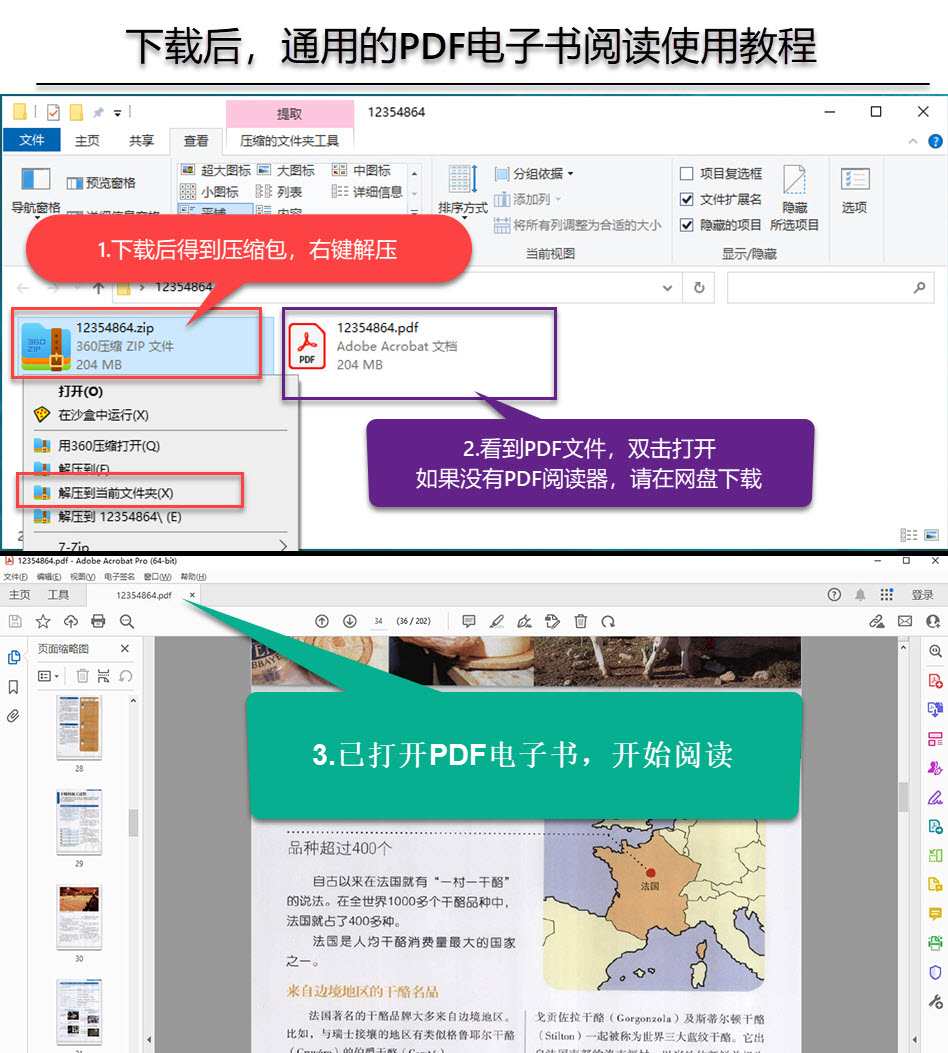物流英语
节选
[
bsp;改革开放以来,我国的流通业伴随着国民经济的整体发展而持续快
速地发展,特别是自20世纪90年代末供不应求的短缺经济时代的结
束,市场对产品和服务的及时性与个性化要求日益提高,加之信息网络
技术的进步与普及,使现代物流业从依附生产与商流的从属地位逐渐地
分离出来,建立起自己独立的市场,形成了一个新的行业领域,并成为国
家与各地区新的经济增长点。
近年来,现代物流业越来越受到社会各界的广泛重视,成为与交通
运输业、金融业、信息业及商贸业并列的五大生产性服务业。更由于物
流装备的进步和信息网络技术的应用以及管理理念的变革,使得现代物
流业的发展进入了一个规模化产业链的全新时期。
在国际上,现代物流业已成为与高科技产业、金融业并驾齐驱的朝
阳产业,受到了各国政府的高度重视。我国领导人曾经多次明确指出,
要把现代物流业作为国民经济重要产业与新的经济增长点。同时指出,
要加强电子商务物流人才队伍的培养,推动各类学校按需施教,培养适
应流通领域电子商务发展要求的物流专业技术人才和管理人才队伍。
为加大推进力度,商务部已经把现代物流与连锁经营、电子商务一起作
为推进流通现代化的三大重点。国家鼓励并支持高等学校、科研院所、
职业学校进一步完善电子商务与物流管理学科建设,推动流通企业抓好
在职培训工作,形成持续有效的继续教育机制,提高不同层次人员的专
业技术应用能力。
物流的发展涉及交通运输、仓储配送、外贸通关、商业贸易等传统产
业的多个环节,各行各业都离不开物流;物流产业市场需求大,物流技能
型人才的需求更大。现代物流技术与设施及计算机网络信息技术的应
用,使得现代物流业发展对人才的需求呈现出五大急需的状况:一是物
流业务操作与器具使用人才,二是物流经营与管理人才,三是物流国际贸易与财务管理人
才,四是物流信息技术应用与系统维护人才,五是物流方案策划与高级营销管理人才。根
据预测:目前我国仅北京地区各类物流人才的需求量每年平均在5万人以上,到2010年全
社会物流人才的总需求量将达到100万人。根据我国加入WTO的承诺,物流和分销服
务业将是*早完全开放的行业之一,国内市场将会出现一个在高层次、高起点上对物流专
业人才需求的激烈竞争。
长期以来,我国各层次的学历教育和职业教育滞后于经济发展,为推动物流业发展,
满足市场对物流人才的需求和缓解人才市场竞争的激烈程度,我们要加紧物流专业人才
的培养。
虽然近年来开办物流专业的院校较多,但沿用多年的物流教材陈旧老化,急需更新。
因此,经过对社会需求、企业用工和人才市场的大量调砑,中国物流技术协会决定组织出
版这套适用于职业教育的物流教材——《职业教育现代物流管理专业系列教材》,来自北
京、上海、黑龙江、辽宁、安徽、湖北、广东、广西,河南、山西等全国15个省市各类职业教育
院校的50多位物流专业主讲教师及物流企业人士参加了该系列教材的编写。
《职业教育现代物流管理专业系列教材》是在市场调查、教学总结、方案研讨、作者培
训、专家论证、实地参观考察、与企业经理进行座谈、与具有丰富实践经验的企业一线人员
交换意见,反复推敲修改写作提纲的基础上进行编写的。教材从物流实际运作与管理的
角度出发,吸收了国内外物流企业成功发展的经验,结合物流企业的真实运作流程,精心
选材编撰,体现了现代物流技术与管理的发展趋势,顺应了市场与社会对培养物流专业技
能型人才的需求。因此,该套教材可作为职业教育各层次物流管理专业学生的教学教材,
也可用于物流企业岗位从业人员的培训教材,为此也得到了国家政府、行业协会、专家教
授、物流企业、工商企业、公司院校等单位的关注和支持。
中国物流技术协会理事长 牟惟仲
2007年7月于北京
全球经济一体化进程加快,世界各国之间的贸易交往日益密切。随
着我国加入wTO、我国流通市场已经全面对外开放,中国市场国际化的
趋势正在形成,为我国物流企业参与国际物流市场竞争提供了良好的发
展契机。英语是工具,也是一把打开世界门窗的钥匙,具有加强沟通、扩
大交流范围的功能,面对国际物流业的快速发展与激烈竞争,英语已成
为我国物流企业进军国际物流市场所必须掌握的技能。尽快提高我国
涉外物流企业从业人员的英语水平已成为目前亟待解决的问题。
《物流英语》一书的出版,正是为培养大量国际物流专门人才,解决
物流企业发展对既懂得物流专业知识、又熟练掌握物流英语及实际业务
运作的技能型人才的急需。本书严格按照教育部关于“加强职业教育、
注重实践教学、强化应用技能培养”等教育教学改革精神和要求,由长期
从事物流英语教学的主讲教师及具有丰富经验的企业人士共同编写。
本书对提高从业人员的英语水平、提升物流企业的服务质量,促进我国
外向型物流业的健康发展具有十分重要的意义。
全书共10个单元,以培养学习者英语书写和口语应用能力为主线,
依照国际与国内物流业务活动的基本过程和规律,结合实际讲解知识内
容,力求突出实用性。本书内容包括:物流简介、客户服务、物流仓储、物
流运输与配送、物流包装、物流采购、国际物流、第三方物流、供应链管
理、物流信息管理等主要环节基本专业英语知识,以及办证下单日常工
作所需的常用词汇用语。
本教材与其他教材相比,具有以下特点:
**,注重教学实效。针对高职学生英语基础普遍薄弱且水平参差
不齐的现状,为了使学生学有所获、学有所用,强化“说”和“写”两方面训
练。课文以单元教学为基础,选材新颖,对重点和难点均进行专门注释、
方便学生自学。课后针对每单元的主题设计了小组讨论题目,以鼓励学生运用所学物流
英语知识来阐述自己的观点,提高口语表达能力;另外,还提供相应的句型翻译,培养学生
的写作技能。
第二,注重岗位应用。对话均以常见物流业务场景为背景,证单填写采用真实单据,
教学安排有说有写,内容务实,形式活泼,强调交流互动。课后配有相应的对话分组练习
和邮件写作训练,充分搭建学生动手平台、提高英语实际应用的技能。
本书作为职业教育物流管理专业的特色教材,注重基础和知识体系的完整,注重实际
应用能力的培养,全书采取新颖、统一的格式化设计。正是由于本书具有定位准确、知识
系统、内容翔实、案例丰富、贴近实际、突出实用性、适用范围宽泛、通俗易懂及便于学习和
掌握等特点,所以本书既适用于物流管理、交通运输、市场营销、工商管理、电子商务等相
关专业各学历层次职业教育教学,还可作为从事国际物流货运代理及其他物流从业人员
的岗位培训教材,对于广大社会自学者也是一本有益的读物。
本教材由李大军进行总体方案策划并具体组织编写,王艳主编并统稿,李人晴和黄强
新为副主编;本书由中国物流技术协会副理事长兼秘书长、高级工程师吴明审定。参加编
写的人员有:王艳(第1单元、第2单元、第3单元),李人睛(第4单元),黄强新(第5单
元、第9单元),刘华(第6单元),李耀华(第7单元、第8单元),刘丽艳(第10单元),马瑞
奇、李晓新(附录);赵茜和蔡丽伟也协助参加了部分单元的编写。
在编写过程中,我们参阅了大量国内外有关物流英语教学方面的书刊资料和企业培
训教材,并得到编委会牟惟仲、吴明等有关专家教授的具体指导,在此一并表示感谢。由
于作者水平有限,书中难免存在不足之处,恳请同行和读者批评指正。
编 者
2008年3月
,
Text 2 Purchasing Process
The purchasing process usually consists of six stages..
~ Identify user need for product and service
~ Evaluate potential suppliers
~ Supplier selection
~ Purchase approval
~ Release and receive purchase requirements
~ Measure suppliers’ performance
However, these stages may vary in different organizations, depending on whether
purchasing is to buy a new or repeat item, and also whether there is a approval process
for purchases that exceed a specific amount. New items require that purchasing spend
much more time evaluating potential sources. Repeat items usually have approved
sources already available.
[Para 1] Identify User Need for Product of Service(~l~,~=~l~~)
The purchasing process begins with identifying materials or services needed by an
internal user. Material requirements might include equipment, components, raw
materials, or even completely finished products. Examples of service can be a need for
computer programmers, transportation carriers, or maintenance service providers.
Users may use different ways to communicate with purchasing, such as by phone, word-
of-mouth, or through the internal computer networks.
[Para 2] Evaluate Potential Suppliers(i~{~’~El~{~/~)
Once a firm identifi’es potential items to be purchased, it must gather and evaluate
information on potential suppliers, and this is the case particularly for a new purchase.
A list of potential suppliers can be generated from a variety of resources, including
market representatives, trade shows, trade journals, the current suppliers, and the
.
Internet. Although the traditional ways are still widely used and helpful, more and more
firms are utilizing the Internet as an aid to search business opportunities since it is
effective, efficient and inexpensive.
[Para 3] Supplier Selection(~_~{~j)
Selecting suppliers is one of the most important activities performed by companies,
since mistakes made during this stage can be damaging and long-lasting. When price is a
main criteria and the required item or service has clear specifications, competitive
bidding is the commonly used method. Generally the lowest bidder receives the contract;
otherwise, the buyer must explain why it did not get the contract. However, when non-
price variables exist, then the buyer and seller usually negotiate directly. Finally, the
purchasing team will select a supplier based on the bids received or the negotiation
result, and then move on to the next stage.
[Para 4] Purchase Approval (~:J~J~;~)
After the supplier is selected, purchasing grants an approval to purchase the
product or service. This is accomplished through issuing a purchase order (PO), also
called a purchase agreement. The purchase order will specify the details agreed by the
buyer and seller, such as quantity, price, delivery date, method or delivery, and so on.
It should be noted that nowadays more and more firms are using computerized databases
to perform these tasks and are moving to a “paperless” office.
[Para 5] Release and Receive Purchase Requirements(~.~[~fl:~j~l~.~)
At this stage, purchasing or other functional groups must monitor the process
carefully. Lots of potential conflicts may occur at this period, since the supplier and
buyer are two separated groups in traditional sense and their goals may be in conflict.
For example, the supplier wants to produce and ship in an economic size, while the
buyer’s goal is to minimize inventory and expect small orders and short lead time.
[Para 6] Performance Measurements(~:)
Suppliers’ performance is critical to an organization, and evaluation should be
conducted on a continuous basis. A supplier that performs well can help organizations be
more efficient, produce higher quality products or services, reduce costs, and increase
profits. However, very few companies have developed systems to measure their
suppliers’ performance.
1.These stages may vary in different organizations,depending on whether
purchasing is to buy a new or repeat item,and also whether there is a approval process
for purchases that exceed a specific amount.在不同的组织中,这些阶段可能会有所不
同,取决于是重复还是全新的采购,还有是否规定了超过一定限额的采购需要一个批准
程序。
2.Material requirements might include equipment,components,raw materials,0r
even completely finished products.物料需求可能包括设备,部件,原材料,甚至是完全的
制成品。
3.Although the traditional ways are still widely used and helpful,more and more
firms are utilizing the Internet as an aid to search business opportunities since it is
effective,efficient and inexpensive.虽然传统的方法仍然被广泛地使用,也很有帮助,但
越来越多的组织逐渐使用互联网作为一个辅助来搜寻商业机会,因为它不但有效,而且效
率高也不昂贵。
4.Finally,the purchasing team will select a supplier based on the bids received。or
the negotiation result,and then move on to the next stage.*后,采购团队将根据收到的
标书或是谈判的结果来选定一家供应商,然后转向下一个阶段。
5.It should be noted that nowadays more and more firms are using computerized
databases to perform these tasks and are moving to a“paperless’’office.应该注意到,今
天越来越多的企业开始采用计算机数据库来完成这些工作,逐渐走向一个“无纸化”的
办公。
6.Suppliers’performance is critical to an organization,and evaluation should be
conducted on a continuous basis.供应商的表现对一个组织来说极为重要,因此应该经常
地进行评价。
]
封面

书名:物流英语
作者:王艳
页数:191
定价:¥18.0
出版社:清华大学出版社
出版日期:2008-04-01
ISBN:9787302169253
PDF电子书大小:148MB 高清扫描完整版
本文标题:《物流英语》PDF下载
资源仅供学习参考,禁止用于商业用途,请在下载后24小时内删除!

